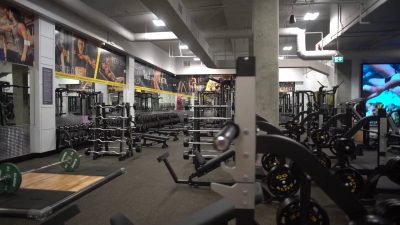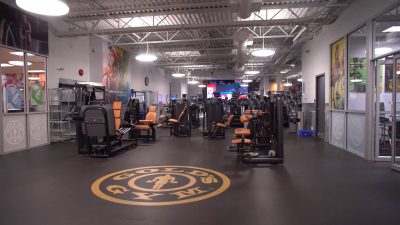Post-workout soreness can be the result of trying a new activity or increasing the overall intensity level of exercise. It’s a message from your body — one that must be respected, says Gold’s Gym Fitness Expert Robert Reames.
“It’s a signal that you’ve used your muscles differently, that you’ve challenged them,” Reames says. “But it’s important to know what is happening in the tissues when you feel sore.”
Muscle soreness after working out means you’re feeling microscopic damage to the muscle fibers, he says. But don’t worry: The tiny tears in the tissues are nothing to be alarmed about. In fact, Reames thinks of them as positive, even necessary.
“Post-workout soreness is a large part of the mechanism of muscle development,” he says. “The microscopic damage occurs, and then the muscle’s repair mechanism kicks in, building the muscle back stronger.”
Pushing yourself without going too far
People new to physical activity might think sore muscles indicate that they did too much, but even regular gym goers can experience soreness after a slight change in their regular fitness routine — like selecting the next incline level on the treadmill or adding a few more pounds of weight on resistance machines.
However, if your muscles are so sore that you’re barely able to move, or if you feel pain in other parts of the body, you’ve probably pushed yourself too far.
“If you increase weight while doing squats, you’ll feel sore in your quads, hamstrings and glutes,” Reames says. “But if you feel a tweak in your knees or hips, or a pain shooting from one of those joints, that’s beyond muscle soreness.”
Workouts designed to increase strength and endurance should be tackled at a slow, steady pace. Soreness will lessen as you progress, indicating that the muscles are strengthening and ready for the next level of exercise. However, if you notice soreness persisting or pain in your joints, consult with a health care professional before continuing exercise.
Recovery from post workout soreness
For general strength training, Reames recommends a rest period of 36 to 48 hours between workouts that target the same areas. While back-to-back targeted workouts won’t hurt you, giving sore muscles time to repair and strengthen themselves will help improve their performance.
“In a long-term fitness plan, you want a rotation of targeted areas and full-body workouts,” he says. “If you focused on the lower body one day, focus on the upper body the next. If you cycled one day, do something on the treadmill the next.
“Variety is the goal. With a comprehensive fitness plan, muscles will recover faster, be stronger and perform better.”
Hydration is another factor. Drinking an adequate amount of water and electrolytes (see our salt tip) helps speed up recovery time by removing toxins that can occur in sore or cramped muscles, replenishing your body and lubricating your joints.
According to the National Athletic Trainers Association, these are general recommendations on how to hydrate before and during workouts:
- Two to three hours before workout: 17 to 20 fluid ounces of water or sports drink
- 10 to 20 minutes before workout: 7 to 10 fluid ounces
- During workout, every 10 to 20 minutes: 7 to 10 fluid ounces
Foam rolling, stick rolling and even massage are also active ways to help the muscles recover. Reames does it after every workout.
“You’re setting up your body to be in much more optimal shape for your next workout,” he says. “If I drive my car for 100 miles, I fill up the tank and check the oil before I put it in the garage. The next time I want to drive, the car is much more ready for action than if I hadn’t done that.”


 WEST BROADWAY
WEST BROADWAY UNIVERSITY MARKETPLACE
UNIVERSITY MARKETPLACE COQUITLAM
COQUITLAM LANGLEY
LANGLEY